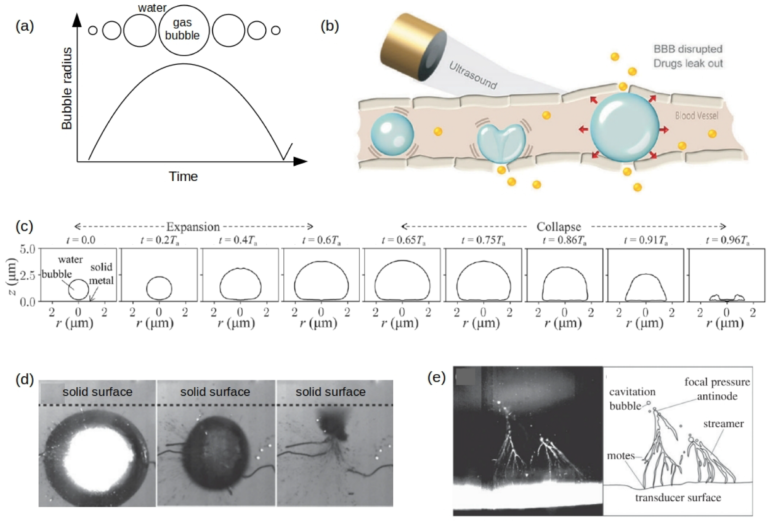Scientists from the University of Tsukuba obtained a new theoretical equation for the propagation of ultrasonic waves through liquids containing encapsulated bubbles. They found that including the compressibility of the bubble shell was vital for accurately predicting the behavior of sound waves. This work may lead to improved resolution of ultrasound imaging based on the development of improved contrast agents.
Ultrasound has become a vital tool in modern health care, because it can provide doctors detailed diagnostic images safely and non-invasively. The technology works by sending high-frequency sound waves from a transducer and listening for the echoes created at the interface between tissues of different densities.
Based on the time it takes for the echoes to return, the computer can reconstruct the image. However, one of the major drawbacks of ultrasound is its low resolution, which means that contrast agents, like microbubbles, are used for echocardiograms or liver scans. A better theoretical understanding of the physics of the interaction between encapsulated microbubbles, which possess a thick shell, and sound waves is still needed to create better contrast agents.
Now, researchers at the University of Tsukuba have derived new nonlinear equations that take into account the compressibility of the shell layer to extend its applicability to multiple bubbles. The researchers chose this path because previous work did not model realistic properties for the bubble surface. “We modeled the shell as a viscoelastic object, which turned out to be an important factor in the analysis,” author Professor Tetsuya Kanagawa says.
Compressibility measures the relative change in volume of fluid or solid in response to an increase or decrease in pressure. Other research projects tended to focus on the deformations of the bubble’s interior, while neglecting the bubble itself. The researchers found that the effect of including the shell in the calculations led to an increase in attenuation (dissipation) coefficient.
“Our work helps pave the way for future refinements to the theory of sound attenuation in liquids,” Professor Kanagawa says. The microbubbles studied in this project might also be converted to therapeutic uses, such as targeted drug delivery. In that case, sound waves could cause the bubbles to burst at specific times or locations in the body, releasing the drug.
The work is published in Physics of Fluids.
More information:
Tetsuya Kanagawa et al, Nonlinear acoustic theory on flowing liquid containing multiple microbubbles coated by a compressible visco-elastic shell: Low and high frequency cases, Physics of Fluids (2022). DOI: 10.1063/5.0101219
Provided by
University of Tsukuba
Citation:
Examining the propagation of ultrasonic waves through liquids containing encapsulated bubbles (2023, June 2)
